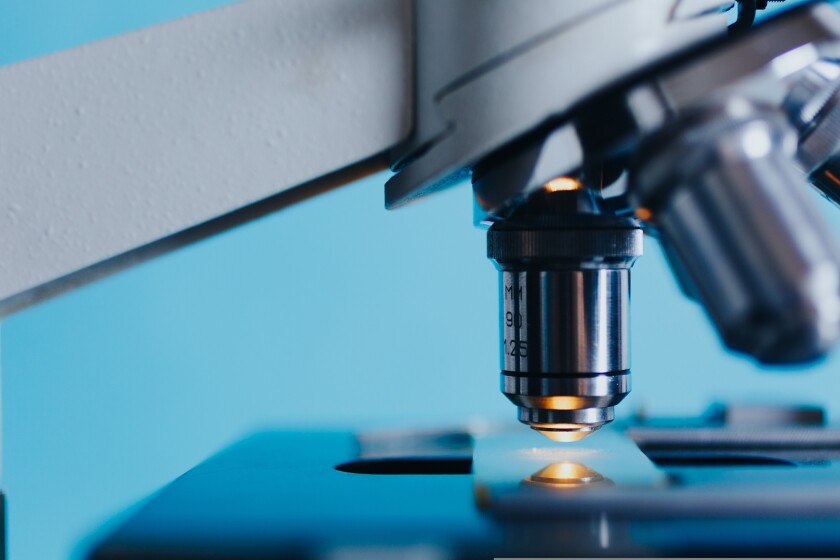Medical devices and diagnostics inventions come under the lens of patent eligibility during the examination of patent applications in every patent jurisdiction. It is normal to find a statutory exception from patentability relating to diagnostic methods, if not for medical devices per se. The object of such exceptions is to keep the medical profession free from any limitation on doctors working.
‘Diagnostic’ means, by definition, serving to distinguish or identify. Ultrasound is a widely used example of a diagnostic tool. Diagnostic methods, on the other hand, may use a device or a substance for the analysis or detection of diseases or other medical conditions. Other commonly used diagnostic tools are magnetic resonance imaging, X-ray computer axial tomography scans, biopsies, and positron emission tomography scans, etc.
Examination guidelines for diagnostic methods
Though diagnostic methods remain outside the scope of patentability in almost all jurisdictions, in countries where patents are granted on diagnostic methods, their patentability has been widely questioned or objected to after the grant. The patent eligibility of a diagnostic method remains the subject of close scrutiny from the patent examiner and has the hurdle of the limitations of the guidelines issued by the patent office, but some diagnostic methods cross the patent eligibility hurdle on the subject matter and are awarded patent protection.
Sometimes, diagnostic method patents are refused by the examiner based on a misapplication of the law or the guidelines issued by the patent office.
In the Indian Patent Office (IPO), there is inconsistency among the examiners at different locations of the IPO in granting or refusing patents on diagnostic methods. This raises questions regarding the patent eligibility of diagnostic methods in India. It is widely accepted, however, that diagnostic method innovations are important and deserve patent protection.
Recently, patents on diagnostic methods have been refused by the controller on the ground that the inventions fall under the exceptions of Section 3(i) of the Indian Patents Act. For example, a claim relating to “a method of diagnosing liver fibrosis in a human subject, obtaining a blood sample from a human subject suspected of having liver fibrosis” was refused (1086/MUMNP/2011). Similarly, a claim relating to biomarkers for chronic obstructive pulmonary disease (COPD) diagnosis to determine the course of treatment was rejected (6616/DELNP/2010).
However, a patent on a diagnostic kit survived an invalidity attack in the High Court in J Mitra and Co v Kesar Medicaments. The court granted an interim injunction in favour of the plaintiff, while prima facie rejecting various grounds challenging the validity of the patent. The patent in question was for a diagnostic kit for the detection of the hepatitis C virus (HCV) in human serum and plasma. This kit device was designed to ensure specificity and sensitivity in carrying out tests, making them viable to detect HCV.
Section 3(i) exceptions
Section 3(i) of the Indian Patents Act excludes “any process for the medicinal, surgical, curative, prophylactic [diagnostic, therapeutic] or other treatment of human beings or any process for a similar treatment of animals to render them free of disease or to increase their economic value or that of their products” from patent eligibility. This (diagnostic, therapeutic) treatment exception was inserted through an amendment in 2005 to take advantage of the flexibility conferred by the Agreement on Trade-Related Aspects of Intellectual Property Rights under Article 27(3).
However, the scope and coverage of the exclusion is not defined in the act. In practice, various medical methods – such as surgical, therapeutic, and routine diagnostic treatment methods – were kept out of the scope of patentability. There is no confusion in surgical and therapeutic treatment exceptions, because these terms are clearly defined in medical parlance. But the act has left many questions unanswered with regard to the patentability of diagnostic methods and the scope of this exception is not always objectively interpreted. This leaves many applicants in doubt as to the patentability of such inventions.
The IPO Guidelines for Examination of Biotechnology Applications for Patent explain, under Section 3(i), that “[d]iagnosis is the identification of the nature of a medical illness, usually by investigating its history and symptoms and by applying tests.” Additionally, the guidelines state that a determination of the general physical state of an individual (for example, a fitness test) is not considered to be diagnostic if it is not intended to identify or uncover pathology. Therefore, for the purpose of examination with regard to patentability, the diagnostic methods excluded from patentability according to these guidelines include methods that determine or identify the existence of a disease or disorder.
Where a diagnostic method does not include the identification of a disease or a disorder, the method is considered patentable. This leaves a narrow interpretation of the scope of diagnostic methods by the examiner.
A plain reading of Section 3(i) clearly provides flexibility in a form such that only diagnostic methods practised on the living body are not patentable. This means that diagnostic methods performed on tissues or fluids that have been permanently removed from the body (in vitro methods) are considered patentable.
Again, diagnostic methods with a purpose of ascertaining the presence, or absence, of a disease that are decisive for treatment decisions in otherwise symptomatic patients are not considered patentable.
Types of diagnostic methods
The Indian Patents Act does not differentiate between the types of diagnostic methods for the purpose of exception to patent eligibility. However, in practice, it is presumed that the Section 3(i) exception of the act does not cover detection tests such as screening tests, as the purpose of such tests is early detection of the risk factors of a disease or, in certain cases, prediction methods for progression rather than diagnosis in individuals who have already had a disease diagnosed.
Normally, such tests do not add anything to the development of methods for further courses of therapy. Therefore, detection tests, as with screening, and prognostic methods for the assessment of disease progression are fundamentally considered patentable in some countries as not being diagnostic methods of treatment.
The Indian position
In the absence of any judicial interpretation on diagnostic methods, there is a mixed bag of patent grants and rejections at the IPO. An illustration of such cases is given below:
Patent/App. No. | Claim type | Status |
IN 278579 | Assay | Granted With the addition of a disclaimer that “wherein the assay is not a method of diagnosis of an ailment associated with a human being and/or animal”. |
IN 298259 | Determination of a value indicative of a viral infection | Granted |
IN 299791 | Secreted and plasma membrane-associated biomarkers
| Granted Deletion of the phrase “by a method as claimed in claim 1”. |
IN 285429 | In vitro method | Granted |
IN 298524 | Bodily fluid | Granted The deletion of the word “diagnostic” and the phrase “providing a sample of a bodily fluid from said subject suffering from a primary non-infectious disease” to amend the claim. |
52/DELNP/2010 | Determination of the correlation between high blood pressure levels and a prediction of severe sepsis. | Refused |
1492/CHENP/2010 | Method of detecting the presence or absence of the Chikungunya virus strain in a biological sample. | Refused |
6616/DELNP/2010 | Biomarkers for the diagnosis of COPD to determine a course of treatment. | Refused |
1086/MUMNP/2011
| Method of diagnosing liver fibrosis in a human subject and obtaining a blood sample from a human subject suspected of having liver fibrosis. | Refused |
4981/DELNP/2008 | In vitro method of detecting the fragmentation of an adiponectin receptor. | Refused The presence or absence of certain soluble fragments in bodily fluids was interpreted as predictive of disease, which is a diagnostic method of treatment. |
Position of diagnostic methods in the US
Categorically speaking, unlike Indian courts, US courts have closely scrutinised the patent eligibility of diagnostic methods and the courts have crystallised certain principal tests for the purpose of examination of such inventions. The most recent test for examining the patentability of diagnostic methods, evolved by the US Supreme Court, is a two-step process:
Determine whether the patent is directed to ‘natural law’, such as a natural phenomenon; if so,
Ascertain whether any element or combination of elements in the patent is sufficient to ensure that it amounts to something significantly more than that natural law.
That means any diagnostic method claim failing this test will be deemed ineligible for patent protection.
In the US, the issue of medical device method patent eligibility is well exemplified by the case of Athena Diagnostics v Mayo Collaborative Services (US 7,267,820), in which a medical diagnostic patent was found to be invalid for claiming a patent-ineligible law of nature. The ground for rejection of a patent in such cases is based on the court’s application of the two steps referred to above.
On the first-step inquiry, the court found the claims to be directed to a natural law: the correlation between the presence of naturally occurring muscle-specific kinase (MuSK) autoantibodies in a bodily fluid and MuSK-related disorders such as myasthenia gravis (MG).
Disagreeing with Athena’s argument that the claims were directed to an innovative laboratory technique rather than a natural law, the court noted that the claimed process steps were based upon routine laboratory methods. Interestingly, Athena’s only admitted innovation was the discovery of a link between MuSK autoantibodies and certain disorders, such as MG.
On Athena’s contention that the claims would not pre-empt any natural law because of the specificity of the claimed process steps, the court categorically noted that “[p]reemption is sufficient to render a claim ineligible…, but it is not necessary.”
Moving on to the application of the second step, the court, finding the claim steps not drawn to the natural law to require only standard techniques to be applied in a standard way, stated that “[b]ecause the specification defines the individual immunoprecipitation and iodination steps and the overall radioimmunoassay as conventional techniques, the claims fail to provide an inventive concept.”
While ruling so, the court rejected Athena’s contention that the claimed steps amounted to significantly more than the natural law because they had not been previously applied to detect MuSK autoantibodies and that they made use of a man-made molecule (i.e., labelled “MuSK”).
The court ruled that, individually and collectively, the claimed steps were found not to represent an inventive application beyond the discovery of the natural law itself because they were known, conventional techniques.
Final thoughts
It is clearly important to view innovation in the diagnostic field through the lens of the above decisions. Care should be taken to consider whether an innovation, or an existing patent, would survive such analysis. If the innovation is likely directed to one of the exceptions described above, consideration should be given to adding a limitation that offers something significantly more to the patent claim.
In general, claims regarding diagnostic methods are patent eligible in India if they are not practised on a living body and they are performed on tissues or fluids that have been permanently removed from the body. Additionally, where a method involves the use of a biomarker or any of the steps involved in the method, it should be novel and involve an inventive step, as required under Section 2(1)(j). However, the “mere use of the known process” may lead to refusal of a patent.
The scope of the patentability of diagnostic methods in India is still not clearly defined due to a lack of interpretation by the courts, unlike in Europe and the US, where diagnostic methods as patentable subject matter have been the subject of litigation in a large number of cases.
An interesting point that emerged from the analysis in this article is that the success of patent claims on diagnostic methods largely depends upon the ability of the applicant to claim novel methods and practical applications, instead of claiming results observation of biological or other physical effects using known techniques. This indicates that not all diagnostic method patent applications hit the Section 3(i) ‘wall’, because many diagnostic patents have been granted in India.
However, expert advice is certainly necessary for those who seek to obtain a patent on an invention relating to diagnostic methods in India.












